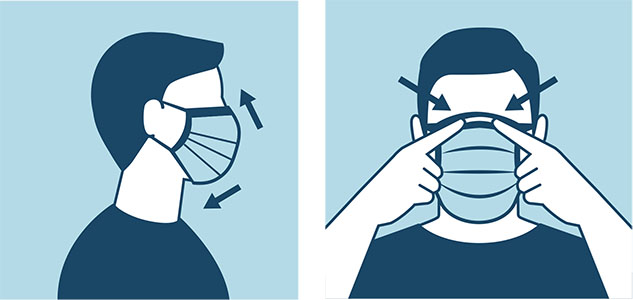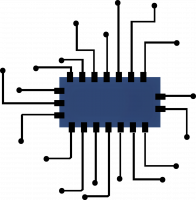HOW TO MAKE A FACE MASK AT HOME

Before you begin making face masks, you’ll want to know the contrast between them, how they may help forestall the spread of COVID-19 and the materials you’ll require.

the CDC has two super-straightforward instructional exercises to attempt. All you require for the sewn form is a needle and string, two square shapes of cotton texture, and elastic or string.
Attempt the CDC essential sewn face veil instructional exercise
In the event that you don’t have a needle and string, the CDC has an instructional exercise for you as well. This one uses only an old T-shirt and some scissors.
Try the CDC no-sew face mask tutorial
Hand crafted FABRIC FACE MASK GUIDELINES
There are a few general guidelines to focus on while making your own custom made face cover. The cover should fit cozily against your face and nose (broken covers are less effective); have the option to be washed without changing shape or getting harmed (you’ll should have the option to wash it to keep it sans germ); and permit you to inhale easily (logical).
The CDC says hand crafted veils should utilize numerous layers of texture, and ongoing examination proposes that utilizing layers of various materials can likewise help improve filtration (for instance, cotton/silk, cotton/chiffon, cotton/wool).
Where to find face mask patterns to make yourself
At the point when you’re scanning for designs, search for one that goes over the nose and under the jawline for most extreme inclusion. It should unmistakably fit cozily around your face. These destinations have designs you can make, with how-to guides included:
WHAT MATERIALS MAKE THE BEST FILTERS?
One style architect has set out on a trial to discover which family materials are the best at sifting particles, for those individuals getting innovative and set up our own custom made face covers.
Originator Chloe Schempf’s unique examination was gotten by molecule testing gear organization TSI, and the organization worked with Schempf to give the way to test the veils to a similar standard as the authority N95 covers.
The investigation concentrated on an entire scope of materials individuals were utilizing to design their own defensive covers, from an independent fundamental handkerchief, to improvised channels, for example, paper towels, vacuum cleaner channels and blue shop towels, which could be opened into a face veil channel pocket. Various blends of different materials were likewise tried. The viability of the material additionally considered how hard the texture was to inhale through.
The outcomes found that while nothing drew near to the adequacy of the N95 cover (which channels least 95% of particles that measure 0.3 microns), the best hand crafted arrangement was one layer of Filti face veil material and one layer of 6.5g cotton ripstop texture.
The second best mix was two layers of layers Kona 100% cotton and one layer of 1500 Filtrete Furnace Filter. A collapsed handkerchief was nearly at the base of the heap when it came to successful sifting (in spite of the fact that it’s still obviously superior to nothing), and correspondingly you should adhere to utilizing your Braun espresso channel for espresso, as that wasn’t too acceptable either.
The examination likewise underlined the significance of fit with regards to how viable a face cover is. See the full discoveries here.
How custom made face covers can help
Custom made face cover designs were accessible online before the coronavirus pandemic started. The majority of them are planned to shut out enormous particles, for example, dust; air contamination from vehicles, processing plants or debris; and allergens, for example, dust.
Nonmedical masks aren’t considered as effective at blocking small particles as the hard-to-get N95 respirator masks but more available.
Homemade masks may help protect others from you
According to the American Lung Association, one in four people infected with COVID-19 might show mild symptoms or none at all. Using a cloth face covering when you’re around others can help block large particles that you might eject through a cough, sneeze or unintentionally launched saliva (e.g., through speaking), which could slow the spread of transmission to others if you don’t know you’re sick.
What to do if your ears get raw
If the elastic straps start to rub your ears painfully, you can make a headband with buttons. In this case, the elastic straps would go around the buttons, rather than your ears, making it potentially more comfortable to wear.
You can also use an S ring hook to attach the straps — take the straps and place them around each U of the ring. When you’re ready to wear the mask, the S ring should be located on the back of your head. This can also help the mask fit better around your face since the ring would help pull the straps snug.
